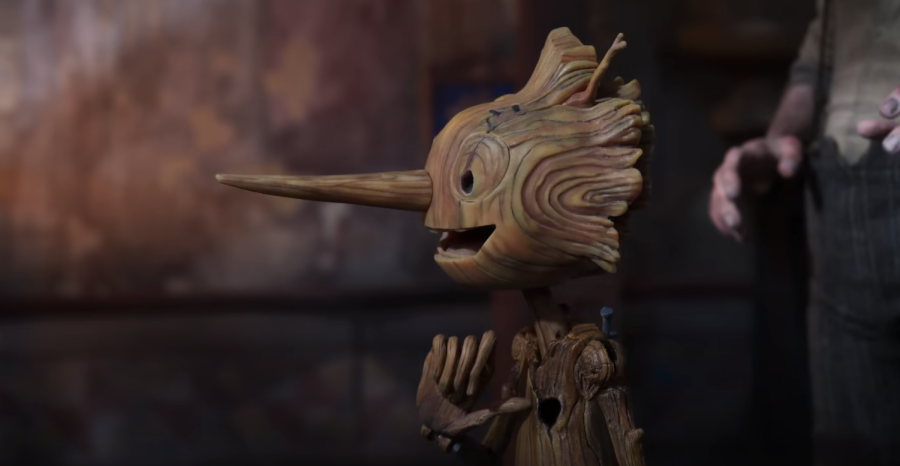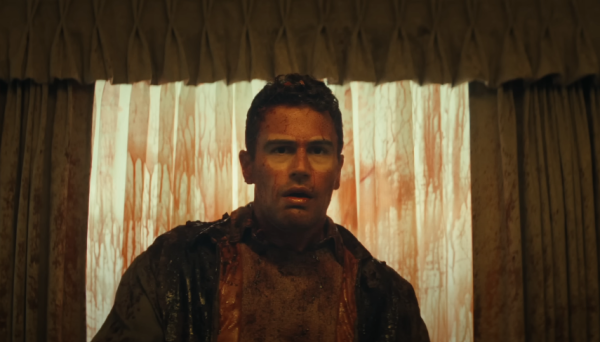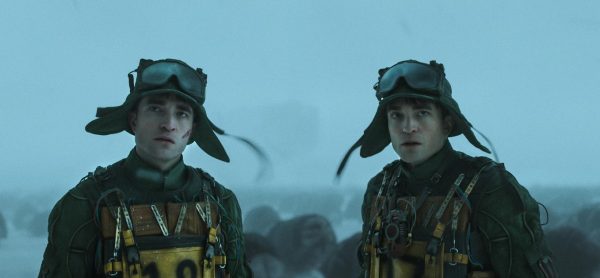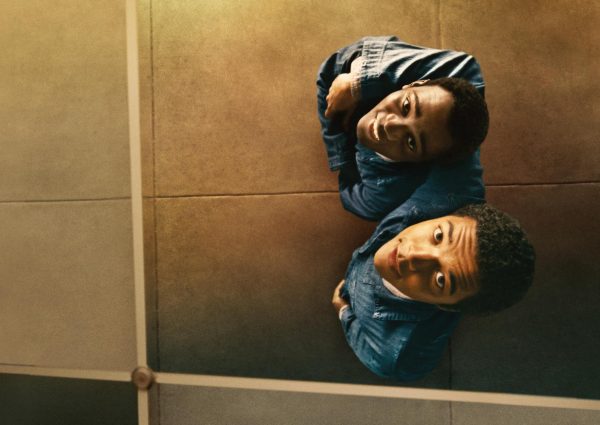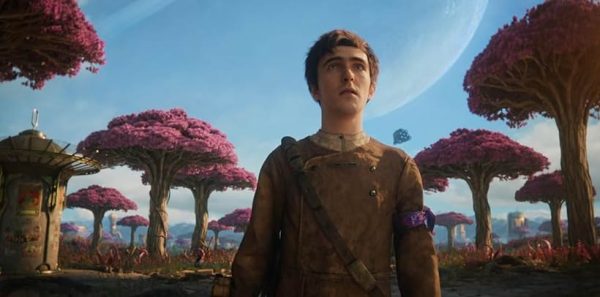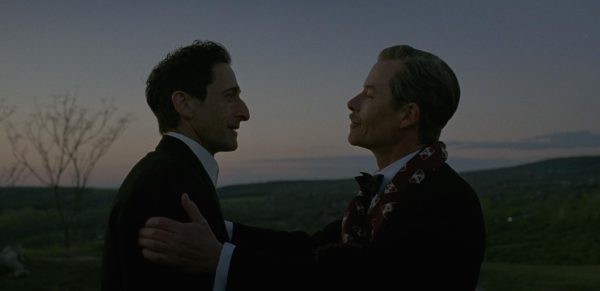Guillermo del Toro’s Pinocchio: A Darker Take on the Classic Children’s Tale?
Stop-motion truly is the one form of art that remains timeless, and it is one for all ages. However, stop-motion is also a hit-or-miss form of art. Not every film can be a Henry Selick masterpiece. One film does seem to be an utter masterpiece: Guillermo del Toro’s Pinocchio, which was released on December 9, 2022.
When one hears the name Guillermo del Toro, the image of Pinocchio doesn’t easily come to their mind. The same man who made Pacific Rim, Pan’s Labyrinth, Hellboy, and The Shape of Water decided to take on the tale of Pinocchio? Sounds like a farcical tale. Regardless, this farcical tale is easily one of the most groundbreaking films of the year and beautifully makes the story of the wooden boy who dreamed of becoming human into one not tainted by Disney’s magic fingers.
This “passion project” by del Toro began in 2008, after he saw Gris Grimly’s design for his 2002 adaptation of the novel The Adventures of Pinocchio. The film would be shuffled through the halls of development hell for the next 10 years, with Netflix finally picking the film up in 2018 and filming commencing in early 2020. Del Toro mentioned in a behind-the-scenes documentary that for the scenes animating the titular Pinocchio and Sebastian T. Cricket, the director used solely Mexican animators to show their talent and the beauty of their craft. This seems even more touching as del Toro himself is from Guadalajara, Mexico.
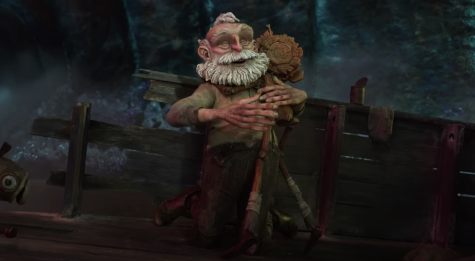
This immense talent leads this film to be one of the most visually appealing stop-motion animated films of the last decade, echoing the detailed and refined touches of Coraline with the characters and set-pieces. The new design for Pinocchio shows him as a crudely-made wooden doll who has very rigid and abnormal movements, almost bordering on animalistic at points. The viewer feels the liveliness in him, juxtaposing the older and slower movements of Geppetto and the more formal and rigid movements of Sebastian T. Cricket.
The beautiful art-style also plays into the realism felt in the characters. In the behind-the-scenes documentary, del Toro states how he wanted to “animate the mistakes,” a seldom seen feat in stop-motion as whenever a take isn’t usable, it can just be reshot. Something as minuscule as a door not closing properly or a balloon being caught on a character’s shoe makes the film not feel like animation but rather a realistic piece of art that blurs the lines between the fabricated and the real world, without entering the uncanny valley.
Taking place in 1930’s fascist Italy, the movie touches on something often overlooked for that time period. Few films seem to focus on the day-to-day lives of the people living there, and how things changed when Mussolini came into power; instead most films focus on Mussolini taking control before the people revolt and join the Allies. This movie does feature a scene depicting Mussolini and uses that time to make him seem like an insignificant man, a perfect example of irony as the past few scenes before this was building him up to be this big, central player. Instead, he only comments on his love of puppets and gives a reaction to Pinocchio’s mocking performance in the next scene.
This time period does have a pretty significant impact visually, as we see people like the Podestà and the citizens meeting Mussolini flash Hitler salutes. The Podestà also mentions how Pinocchio would make the “perfect soldier” due to his immortality, which is explained early on. We also see how different people react to current events, as the main antagonist seems to be power-hungry and wants to get in good with “Il Dulce,” and posters depicting the fascist government are seen throughout the runtime.
The film’s brutality is strangely juxtaposed with some of the best musical numbers in recent years, with songs with such beauty that they bring actual emotions to the surface. Pinocchio’s childish wonder in “Everything is New to Me” is adorable, and the emotional anguish as he sings “Ciao Papa” mixed with scenes of Geppetto searching for Pinocchio are almost too much at times. The movie also has terrific pacing, with no scenes feeling rushed or drawn out. From the opening moments, we see Geppetto’s life before the war and after, allowing the viewer to connect with him and feel like he is a good man at heart. The way the tale of Pinocchio’s life is handled also feels excellently paced, from his creation, to him joining a circus, to him being taken by the Podestà. All these instances felt like they came naturally and offered a new look into Pinocchio’s human emotions.
Numerous A-list celebrities lended their voices to this incredible masterpiece. Firstly, child actor Gregory Mann redeems himself for his acting in the 2018 Cats movie by portraying the titular Pinocchio, which is easily one of the most human portrayals of the beloved childhood fable to date. Another major supplier of the wonder for this movie is Ewan McGregor, who voiced Sebastian T. Cricket. McGregor’s voice created the most impactful and memorable character in this movie, and he was able to to show his singing again after his wonderful performance as Lumiere in the 2017 live action Beauty and the Beast movie. Another major name includes frequent del Toro collaborator Ron Perlman, who voices the Podestà. David Bradley, known for portraying Filch in the Harry Potter series, lends his terrific voice to Geppetto. Tilda Swinton portrays the wood sprite which gives Pinocchio life, as well as the chimera depiction of death the film has. Finn Wolfhard, known for Stranger Things and It, portrays Candlewick, and Cate Blanchett portrays Spazzatura, a surprising role as the character doesn’t speak, only making noises one would expect a monkey to make. The most surprising addition to this voice cast was Tom Kenny voicing Mussolini and a sea-captain, as he is best known for being Spongebob Squarepants from the titular show and Ice King from Adventure Time.
In conclusion, this movie is simply, undoubtedly, a masterpiece on numerous fronts. From del Toro’s incredible work directing, writing, and producing it, to the voice talent making this film rich with emotion and not feel like a boring two hour animated shlock-fest, and the story which remains in one’s mind after viewing the film for the first time. As a stop-motion animated film, this will hopefully become one of the greats. As an adaptation of a well-known tale, it certainly shouldn’t be watched by younger children, but as a tragic tale of self-reflection and finding out how to become human again, even if you were never human to begin with. This film checks each and every box down to the last frame.

